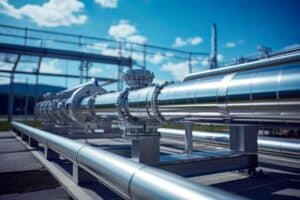Companies across the pipeline supply chain are keen to practice diversity and inclusion (D&I) in their workplaces, but what precisely does that mean? While diversity has certainly evolved beyond ‘positive discrimination’ quotas, the concept of inclusion has entered the mix to help create a positive workplace experience for people of all types.
What do we mean by diversity and inclusion?
Diversity in a workplace is demonstrated by the representation of different types of people as defined by factors such as ethnicity, gender, values, backgrounds, age, mental/physical ability, experiences and so on.
Inclusion, on the other hand, is a mindful effort to ensure that all employees feel valued, respected and supported. It doesn’t just happen because a workforce is diverse, it happens when everyone in an organization strives for equity, embraces differences and welcomes everyone for their unique contributions. This is what makes diversity work.
Inclusion is a conscious choice, and it’s a building block for a happy, productive workplace.
The cost of a lack of inclusion
There are many reasons why building inclusion might not seem like an organizational priority. For instance, if diversity and inclusion objectives don’t align with organizational objectives, or if the commitment to inclusion lacks authenticity and support, then efforts will fail to fully embed in the organizational culture. Some of the downsides to a lack of inclusion include the following:
-
- Higher employee turnover
- Lower engagement and productivity
- Increased litigation and complaints
- Lower levels of innovation
- Decline in community/customer relations
- Brand or reputation damage
With the need to replenish an aging workforce, the demographics of the energy sector workforce have been changing over time. According to Statistics Canada, in 2019, 26 per cent of workers in the oil and gas industry were female, 6 per cent were indigenous, 41 per cent were immigrants and 26 per cent belonged to a designated visible minority group. Increasing the potential pool of people we attract into the industry will mean we can continue to reliably deliver the energy Canadians need, while fostering the experience, knowledge and ideas required to advance our other goals like a sustainable energy transition.
The benefits of diversity and inclusion
When an organization consciously includes all staff in D&I conversations, the benefits can be profound:
-
- Discrimination is reduced
- Employee engagement and satisfaction rises
- Innovation and problem solving increase
- It becomes easier to attract and retain diverse talent
- Complaints and legal actions are minimized
When people feel like they belong and are valued in their workplace, it’s not surprising that they’re more loyal and motivated. But further than that, when an organization is willing to embrace different viewpoints, ideas and suggestions it encourages initiative and innovative thinking throughout the workforce.
Canada’s pipeline operators, and companies through the supply chain, are making huge strides in creating diverse workplaces. An understanding of the concept of inclusion is certainly helping them create a safe, supportive environment in which employees can contribute and grow.
The Canadian Centre for Diversity and Inclusion is a social organization dedicated to helping create workplaces that are inclusive, free of prejudice and discrimination. Their website contains information and resources for anyone interested in learning more.
“We don’t all have experts in our workplace who can guide us on this D&I journey, so organizations like the Canadian Centre for Diversity and Inclusiveness are ideally suited to provide companies with services that will help engage and educate your staff and build a great D&I culture,” said Rick Tofani, Executive Director, Energy Connections Canada.




